Sweet and sour Fond memories, family connection found in pungent Polish soup
Read this article for free:
or
Already have an account? Log in here »
To continue reading, please subscribe:
Monthly Digital Subscription
$0 for the first 4 weeks*
- Enjoy unlimited reading on winnipegfreepress.com
- Read the E-Edition, our digital replica newspaper
- Access News Break, our award-winning app
- Play interactive puzzles
*No charge for 4 weeks then price increases to the regular rate of $19.00 plus GST every four weeks. Offer available to new and qualified returning subscribers only. Cancel any time.
Monthly Digital Subscription
$4.75/week*
- Enjoy unlimited reading on winnipegfreepress.com
- Read the E-Edition, our digital replica newspaper
- Access News Break, our award-winning app
- Play interactive puzzles
*Billed as $19 plus GST every four weeks. Cancel any time.
To continue reading, please subscribe:
Add Free Press access to your Brandon Sun subscription for only an additional
$1 for the first 4 weeks*
*Your next subscription payment will increase by $1.00 and you will be charged $16.99 plus GST for four weeks. After four weeks, your payment will increase to $23.99 plus GST every four weeks.
Read unlimited articles for free today:
or
Already have an account? Log in here »
Hey there, time traveller!
This article was published 29/06/2022 (1257 days ago), so information in it may no longer be current.
What’s on your plate?
It is often the simplest of foods that evoke the strongest of emotions.
That first cup of tea as dawn breaks, standing still before life comes crowding in. The perfumed sweetness of a fuzzy peach. A grilled cheese scarfed down in a rush between activities, leaving your tongue slightly burnt. The smell of buttery popcorn, salty on lips as you lean in for a first kiss at the cinema.
What’s On Your Plate is a new monthly series delving into the memories a dish reignites. If we are what we eat, then who are you?
It is often the simplest of foods that evoke the strongest of emotions.
That first cup of tea as dawn breaks, standing still before life comes crowding in. The perfumed sweetness of a fuzzy peach. A grilled cheese scarfed down in a rush between activities, leaving your tongue slightly burnt. The smell of buttery popcorn, salty on lips as you lean in for a first kiss at the cinema.
What’s On Your Plate is a new monthly series delving into the memories a dish reignites. If we are what we eat, then who are you?
The series would not have been possible without the generosity of staff at Red River College’s Paterson GlobalFood’s Institute who kindly permitted us to use the kitchens of Jane’s restaurant.
Dorota Blumczynska is slight and loquacious. Standing at five-foot-two (and ¾, she’s quick to specify), the CEO of the Manitoba Museum thrums with energy. The air around her seemingly shimmers as she chats up a storm, excavating childhood memories while her hands move lightning fast, chopping, slicing and dicing, pausing for breath only to taste for seasoning, playfully bantering with her daughters.
“I have been eating Zurek my entire life,” she says, referring to the soup bubbling gently on the stovetop.
“We didn’t have that much in terms of belongings when we left Poland. We weren’t able to bring special objects. But food is the kind of thing you don’t have to physically transport. It’s the kind of thing you can reinvent.”
A recipe doesn’t need to be written down. It can travel with you, trapped in your tastebuds, tapped into when you stand by a stove. A memory triggered when a smell hits your nose or a texture glides across your tongue. The crackle garlic makes as it sizzles in oil has the same transportive power as that of Proust’s madeleine.
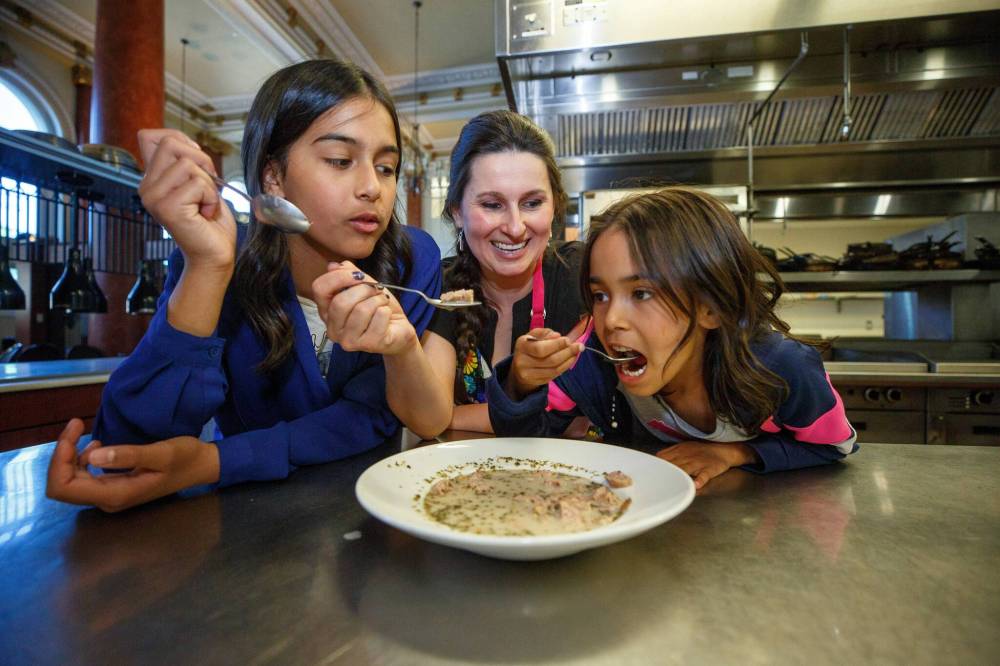
“When I have this soup at the table, I sit with the members of my family who are no longer with me. With my mother and my grandmother and their families,” Blumczynska says.
Polish in origin, Zurek is a distinctly sour broth made from a base of fermented rye flour, robustly seasoned with garlic, generously flavoured with marjoram and swimming with three kinds of meat.
It’s a lavish dish, Blumczynska explains, often served at times of celebration such as Easter and Christmas.
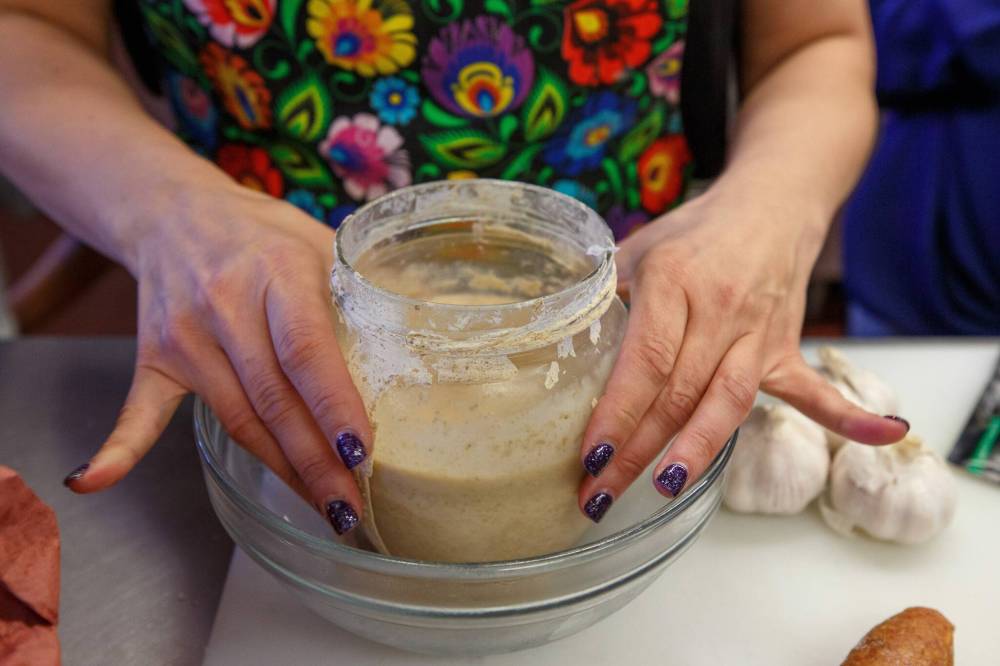
“I actually had to start this soup a week ago. You make a paste mixture that you set aside in a jar, and it ferments and sours and takes on an amazing and very layered taste and rich aroma,” she says.
Blumczynska chats as her daughters Maya, 7, and Kala, 10, meticulously peel the papery skin of three bulbous heads of garlic, a mammoth task they take on cheerily, chatting amiably with each other as they handle the cloves.
The sisters are experts; this is nothing new for them, as the family often cooks together.
“We always help mama at home,” Kala says while Maya grapples with a particularly stubborn clove. Their brother Isiah, 16, also often joins in with the cooking.
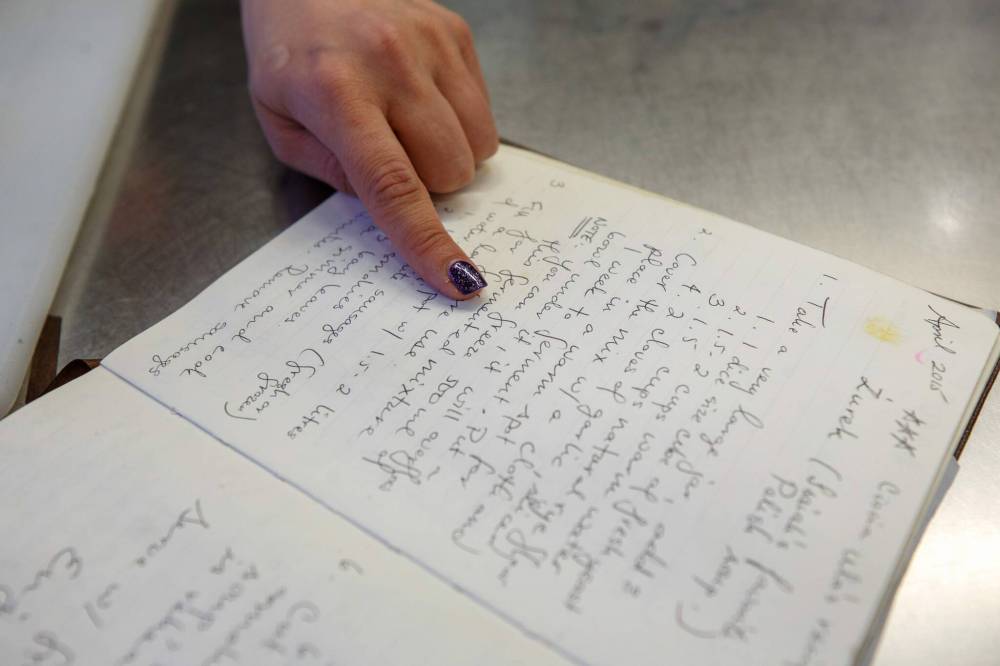
”Cooking together is absolutely central in our home. It’s an opportunity to celebrate who we are. I think there’s a way to weave my heritage and weave in my children’s mixed heritage as we talk about the presence and importance of food in our lives,” Blumczynska says.
Blumczynska arrived in Canada in 1989 as a privately sponsored refugee, together with her parents and siblings. She was seven when she left Poland and before landing in Winnipeg had endured 14 months in a camp in Eastern Germany.
“It’s amazing the things you can talk about when you are spending that much time together in the preparation of food. We talk about culture and identity; they ask me about my childhood. We talk about their father being Tamil and we get to explore what it means to have parents who come from two different places, what it means for them as an identity to be Canadian.”

The trio are very close; they huddle together, arms touching as Blumczynska instructs them on what to do next. There is constant chatter — lots of questions about who we are and why they’re there and why we are all so interested in this soup and in “mama” herself, the last query making Blumczynska roll her eyes at the cheek of it all.
“Food is the thing that pauses the quickness of life and busies our hands giving us the chance to think or talk or just silently be together. It is wonderful invitation to dialogue. It’s not directive, it’s not imposing. It doesn’t tell you how the conversation is going to unfold. It lets you improvise and move through emotions and topics and hopes and dreams,” she says.
“My mum passed away when I was 16. As a teenager, I didn’t have the appreciation of the importance of food sustaining a culture. I didn’t have the wherewithal to think about watching and writing recipes. A number of years ago I went to her youngest sister to teach me and show me everything she does, and the recipe I make is her recipe.”
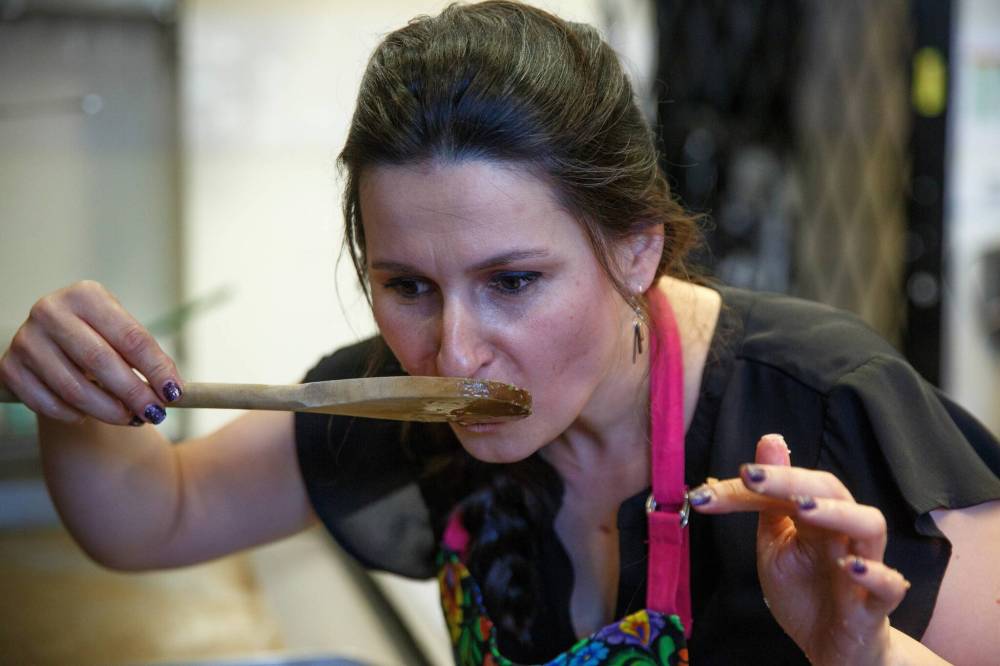
The Zurek is ready. It’s pale and creamy and speckled with green, evidence of dried marjoram floating on top. The children crowd their mother, spoons already dipped in as they scoop out chunks of meat.
This soup is a thread running through Blumczynska snaking its way back to Poland. Every time she makes it for her family she tightens that string, hitching her to her roots, the memory of what she left behind making her present all the sweeter.
The chatter stills, silence broken only by the sound of (polite) slurping. They close their eyes, all three transported to a place Blumczynska left when she herself was a little girl.
av.kitching@winnipegfreepress.com
Urszula Walczak’s Zurek recipe
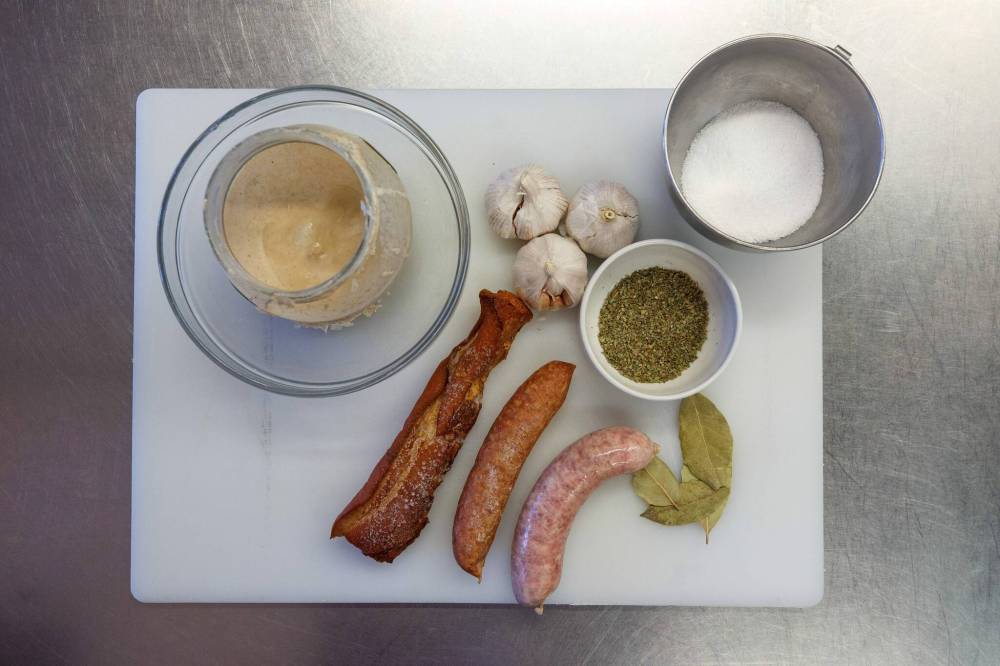
FOR THE SOUR FLOUR MIXTURE
375-500 ml (1 1/2 to 2 cups) warm water
Dice-sized cube of fresh yeast
375 ml (1 1/2 cups) natural rye flour
2 cloves garlic, sliced
FOR THE SOUP
10 white sausage, fresh or frozen
2 smokies
2-3 bay leaves
Salt and pepper to taste
250 g (1/2 lb) sautéed bacon with fat
250 ml (1 cup) cream
10 to 15 cloves fresh minced garlic (or to taste)
125 ml (1/2 cup) marjoram
For the sour flour
Take a very large jar, and add the yeast, 375 to 500 ml (1 1/2 to 2 cups) warm water, the rye flour and the two sliced garlic cloves. Cover with a cloth and place in a warm spot for one week to ferment. Place a bowl under the jar: it will overflow.
NOTE: You can freeze some of this fermented mixture for future use.
For the soup:
Fill a large pot with 1.5-2 litres of water. Add the white sausages, smokies, and 2-3 bay leaves. Bring to a simmer and cook for 15 minutes. Remove sausages and place on ice or snow to stop the cooking process. To the simmering water, add the sour flour mixture, salt and pepper to taste, the bacon and fat, the minced garlic, cream and marjoram.
Cut up the sausages and smokies, add back to the soup, make sure everything is reheated, soup is done.
Serve with fresh rye bread with butter. Enjoy!

Our newsroom depends on a growing audience of readers to power our journalism. If you are not a paid reader, please consider becoming a subscriber.
Our newsroom depends on its audience of readers to power our journalism. Thank you for your support.







